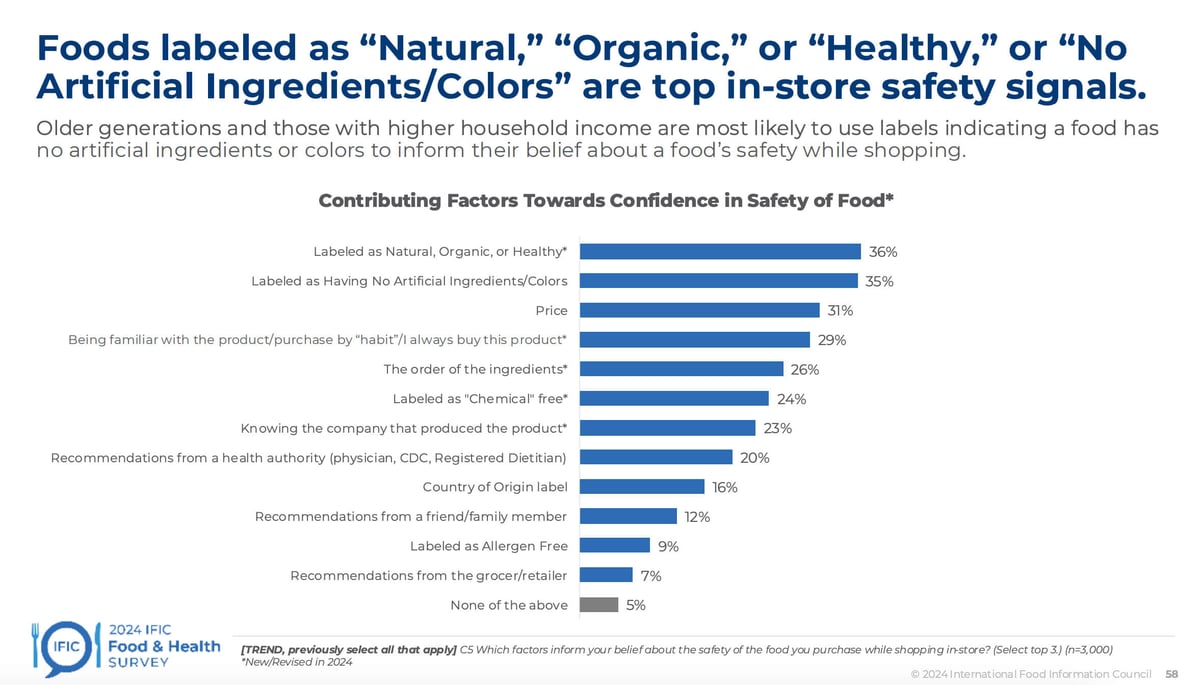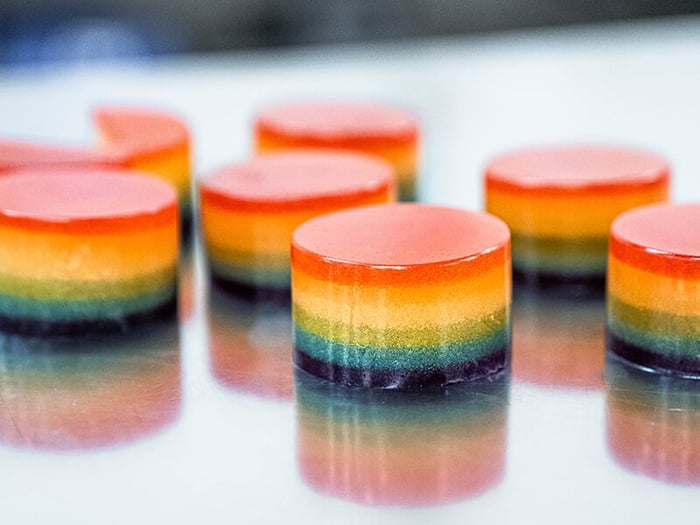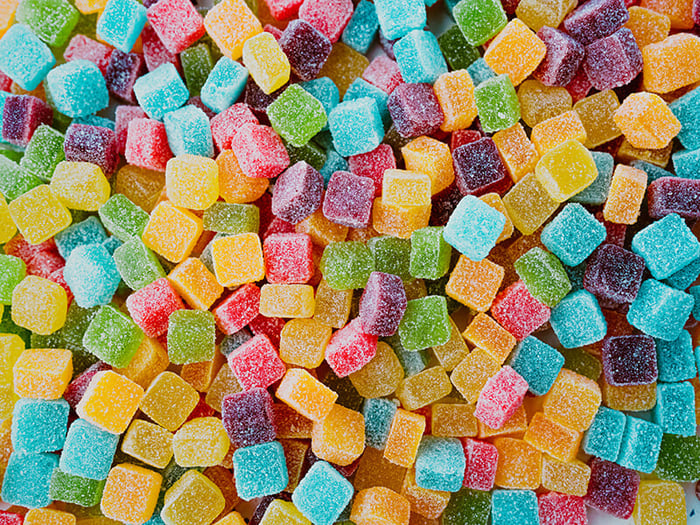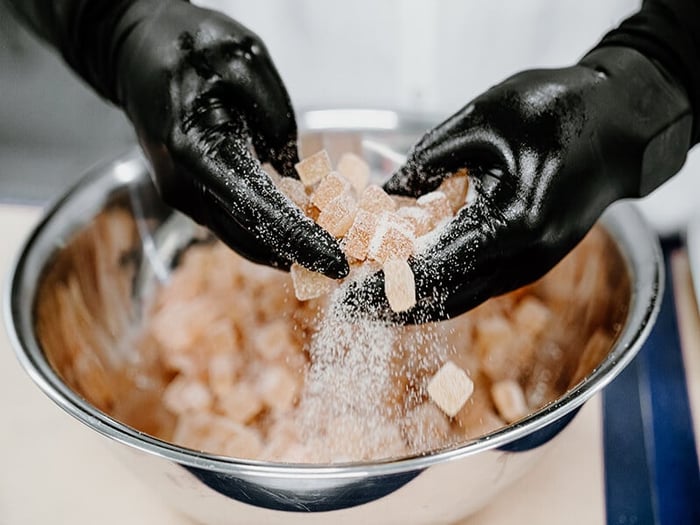What are food dyes, and why should you choose natural colors?
Choosing natural colors for manufacturing all-natural gummies is a commitment to both quality and health, ensuring vibrant, safe products that align with consumer demand for healthier, chemical-free options.
Synthetic colors are used to make our food more visually appealing. You just need to take a stroll down the candy, drink or cereal aisle at your local grocery store to see their prevalence. Unfortunately consumers are unknowingly paying the price with the potential health risks that come along with the consumption of synthetic colors. Luckily, consumers are becoming more aware of what they are putting in their bodies, resulting in increased demand for plant based color alternatives. Gummy manufacturers, therefore, have an opportunity to meet this demand by formulating with better-for-you plant based colors. At Melt-to-Make™, we only formulate gummy bases with all-natural colors, allowing you to create all-natural gummies with confidence. After years of rigorous R&D, we've perfected the stability of these natural colors, so you can create vibrant gummies without the hassle.
Synthetic colors are easier to formulate with than plant based colors, but here at Melt-to-Make we are unwilling to trade convenience for quality. That's why we are dedicated to supplying you with a product that allows you to produce all-natural gummies for your consumer base.
Dive into the 2024 FICI Food & Health Survey to see the increasing popularity in foods labeled as "Natural," "Organic," Healthy," or "No-Artificial Ingredients/Colors."

So why are synthetic colors so bad?
The FDA has known about the risks associated with consumption of synthetic colors for decades. Studies have found potential developmental effects on neurons, increased risk of certain cancers, hazards to developing brains, behavioral issues such as hyperactivity in children, and risk of allergic reaction. In 1990 the FDA banned Red Dye No. 3 in cosmetics due to the risk of cancer. They pledged to also ban it in foods, but this never came to fruition. Red dye is still found in thousands of food products, effecting our society daily.
A number of nonprofit environmental and nutrition groups have asked for these colors to be banned or for foods containing them to have a warning label, but the FDA still has not acted. Therefore, it is up to food manufacturers to decide and make a change. The good news is that ethical business practices, like using plant based colors, have been shown to be good for profits in the long run.
Melt-to-Make’s Pledge to Quality & All-Natural Gummy Ingredients
At Melt-to-Make™ we made a vow not to use any harmful ingredients in our gummy bases. As a dietitian and a mom, I wanted to create something I could be proud of, and I wanted to give our customers (and my kids) a product that is free of harmful ingredients such as synthetic colors, artificial flavors, and alcohol sweeteners. Working with plant based colors, such as elderberry juice, turmeric, spirulina and butterfly pea flower has been challenging, but incredibly rewarding. I never thought we could create such vibrant blues and intense pinks with plant based colors, but after years of R&D, we have successfully created an exciting pallet of gummy colors that hold up under tough conditions. This dedication ensures that the all-natural gummies we help you produce are not only beautiful, but safe and healthy as well.
The US is one of only a few industrialized countries that doesn’t have strict regulations around synthetic colors, but that is starting to change. In October 2023, California passed AB418, the California Food Safety Act, which bans the use of Red 3. Ten other states have introduced legislation to also ban Red 3 and other harmful additives and colors. To see an up-to-date interactive map of what is happening in your state click here.
As a healthcare professional I am encouraged to see that the US is waking up to the potential dangers of synthetic colors. Plant based colors are not a trend, they are the future. It's notable that while the U.S. often uses synthetic dyes, many other countries have stricter regulations and a preference for natural plant based alternatives. When you grab a bag of gummies in Europe they have a completely different ingredient list void of synthetic colors, and guess what? They still taste and look appealing. Producing all-natural gummies not only meets the demand for healthier options but also aligns with the global movement toward safer, more sustainable food practices.
For a summary of the the health risk associated with different synthetic food dyes you can view the following resources:
Center for Science in the public Interest - Artificial Colorings (Synthetic Food Dyes)
Environmental Working Group - What is Food Dye?





